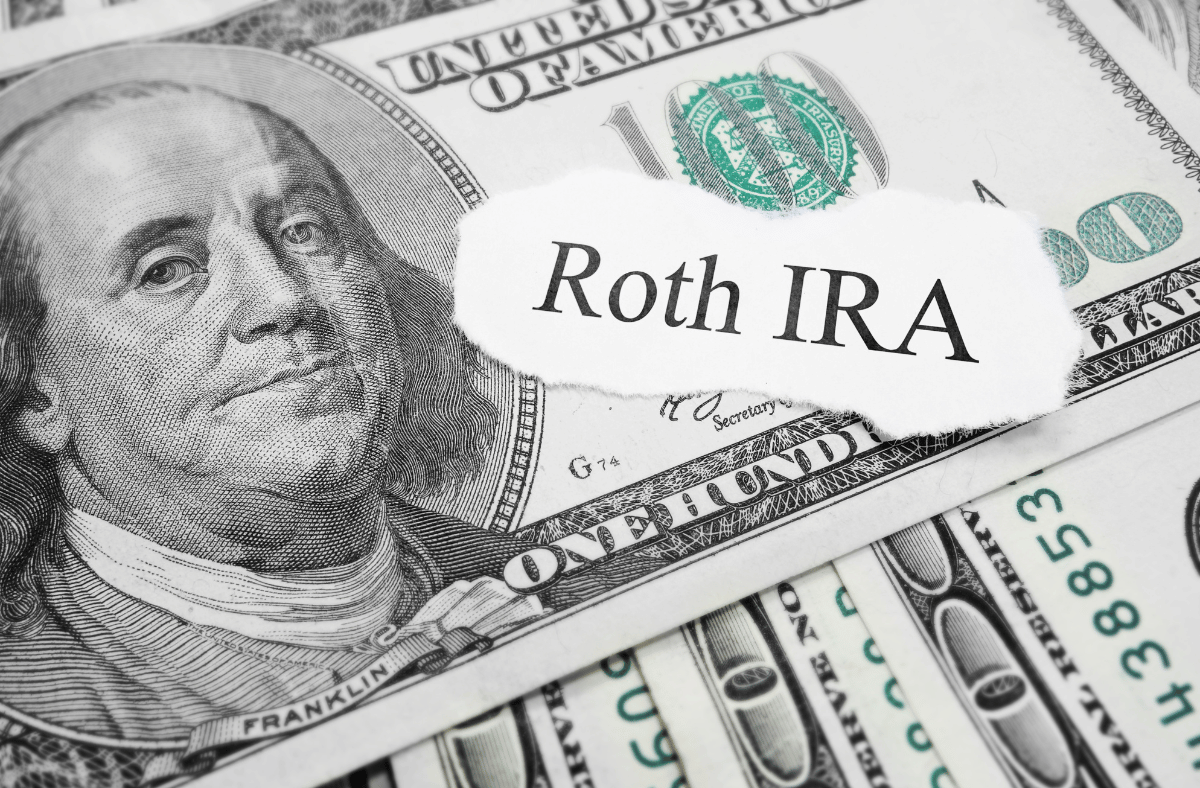Understanding Roth IRA Contribution and Income Limits 2023

Do you ever wonder if you’re maximizing your retirement savings? Understanding Roth IRA contributions and income limits is crucial to making the most of your retirement investments. In this blog post, you’ll learn everything you need to know about Roth IRA contribution limits in 2023, factors that can affect your contributions and strategies for high-income earners to still benefit from Roth IRAs.
Key Takeaway
- In 2023, the Roth IRA contribution limit is $6,000 for most individuals aged under 50 and a catch-up contribution of up to $1,500 for those over 50.
- Factors such as MAGI and tax filing status can affect contribution limits. High earners may benefit from strategies like a backdoor or mega backdoor IRAs.
- Retirement plans should be tailored to individual needs with help from financial advisors in order to maximize savings potential.
2023 Roth IRA Contribution Limits

In 2023, the Roth IRA contribution limit is set at $6,000, which is considered the maximum contribution limit for most individuals. Those aged 50 and over are eligible to make an additional catch-up contribution of $1,000. This means that most individuals can contribute up to $6,500 in 2023, which is a slight increase from the $6,000 limit in 2022. It’s important to keep in mind that contributions to a Roth IRA are made after tax, meaning no upfront tax deduction is available. However, withdrawals on earnings can be made tax-free, provided the account has been held for a minimum of five years, and the account owner is aged 59 1/2 or above.
But what if you contribute too much to your Roth IRA or have multiple accounts? Exceeding the annual contribution limit can result in an IRS penalty. So, it’s advisable to monitor your Roth IRA contributions, particularly if you maintain multiple accounts. Should you have any queries regarding the withdrawal of superfluous funds, it may be prudent to seek the counsel of a tax specialist.
Factors Affecting Roth IRA Contributions

Income, tax filing status, and other deposits into other IRA accounts can have an effect on the amount that can be contributed to a Roth IRA. In the following subsections, we will delve deeper into how your Modified Adjusted Gross Income (MAGI) and tax filing status can influence your eligibility and contribution limits for a Roth IRA.
For example, if your MAGI is above the IRS limits, you may not be eligible.
Income Limits and MAGI
The Roth IRA income limits are determined by your MAGI and tax filing status. MAGI is an important metric used in determining eligibility for certain tax credits and programs. It is calculated by adding back deductions to Adjusted Gross Income (AGI) from your tax return. These deductions include items such as student loan interest, self-employment taxes, and higher education expenses. If your MAGI falls within the Roth IRA phase-out range, you may make a partial contribution.
For example, in 2023, single filers with a MAGI of $153,000 or more are not eligible to contribute to a Roth IRA. For head of household filers, they may contribute a reduced amount to a Roth IRA if their income falls within the range of more than $218,000 but less than $228,000.
It’s important to be aware of these income limits and how they affect your ability to contribute to a Roth IRA to maximize your retirement savings.
Tax Filing Status
Your tax filing status can also impact your Roth IRA contribution limits and eligibility. For instance, if you are married and filing jointly, you may be able to contribute more than if you are single. Moreover, if you are married and filing separately, you may not be able to contribute at all.
It’s important to understand how your tax filing status affects your ability to contribute to a Roth IRA, so you can make informed decisions and plan accordingly.
Strategies for High-Income Earners

High-income earners may face restrictions or have their contributions disallowed when it comes to Roth IRAs. However, there are strategies available for high-income earners to still benefit from Roth IRAs. One popular option is a backdoor Roth IRA, a strategy that enables high-income earners to effect a conversion of a traditional IRA into a Roth IRA.
Another strategy for high-income earners is the mega backdoor Roth IRA, which involves making after-tax contributions to a workplace retirement plan, such as a 401(k), and then converting those contributions to a Roth IRA. This strategy allows high-income earners to contribute larger sums to a Roth IRA, bypassing the income limits that typically apply.
It’s essential for high-income earners to explore these strategies and consult a financial advisor to determine the best approach for their unique situation.
Spousal Roth IRA Contributions

A Spousal Roth IRA is an account that can be funded by any married couple who file joint tax returns, even if one spouse doesn’t earn income. Contributions can be made to the account by the earning spouse. This allows nonworking spouses to contribute to a Roth IRA based on the income of the working spouse. The contribution limits for a Spousal Roth IRA are equivalent to those for a regular Roth IRA.
Just like regular Roth IRA contributions, contributions to a Spousal Roth IRA are not tax-deductible, but the earnings upon withdrawal are exempt from taxation. This strategy can help couples maximize their retirement savings and ensure that both spouses are contributing to their future financial security.
Correcting Excess Roth IRA Contributions

If you find yourself contributing too much to your Roth IRA, it’s essential to take steps to rectify the situation and avoid any IRS penalties. The first step is to withdraw the excess contributions and any associated earnings. This withdrawal must be completed by the due date of your tax return, including extensions, for the year in which the excess contribution was made.
Next, you’ll need to submit Form 5329 to report the excess contributions to the IRS. By taking these steps, you can correct any excess Roth IRA contributions and avoid potential tax penalties.
If you’re unsure about how to handle excess contributions, it’s always a good idea to consult with a tax professional for guidance.
Traditional IRA vs. Roth IRA

When planning for retirement, it’s important to compare traditional IRAs and Roth IRAs to determine which option is best for you. Traditional IRAs are funded with pre-tax dollars, while Roth IRAs are funded with after-tax dollars. Traditional IRA contributions do not have income limits, whereas Roth IRAs have income limits that can affect your ability to contribute.
Another key distinction is the tax advantages associated with each type of account. While traditional IRAs do not provide any tax benefits, Roth IRAs offer tax-free growth and tax-free withdrawals. By carefully considering the differences between traditional and Roth IRAs, you can make an informed decision about which retirement savings vehicle is most suitable for your financial situation and goals.
The Saver’s Credit and Roth IRA Contributions

The Saver’s Credit is a tax credit for low to moderate-income taxpayers who contribute to a retirement plan, including Roth IRAs. The amount of credit you receive is based on your income, with a maximum credit of $1,000 for an individual and $2,000 for a married couple filing jointly.
To claim the Saver’s Credit, you’ll need to complete IRS Form 8880 and include it with your tax return. By taking advantage of the Saver’s Credit, you can further maximize your retirement savings and reduce your overall tax liability.
Retirement Savings Tips and Strategies

Maximizing your retirement savings is crucial for financial security in your golden years. In addition to contributing to a Roth IRA, you may want to consider other investment options, such as stocks, bonds, mutual funds, and exchange-traded funds. It’s also important to start saving early, create a retirement plan tailored to your unique needs and objectives, and review and modify the plan at various stages of your life.
Consulting a financial advisor can help you formulate a personalized financial plan that incorporates Roth IRA contributions, other investment options, and workplace retirement plans like 401(k)s and SEP IRAs. By exploring all available options and strategies, you can ensure you’re making the most of your retirement savings.
Institute of Financial Wellness
The Institute of Financial Wellness is a comprehensive multimedia network that offers financial education, resources, and services to assist individuals in reaching their financial objectives. By providing tailored strategies, the Institute aims to shift the focus of the finance services industry towards financial well-being.
If you’re interested in learning more about Roth IRA contribution limits, retirement planning, or personal finance in general, the Institute of Financial Wellness can be an invaluable resource. By taking advantage of their expertise and guidance, you can make informed decisions about your financial future.
Full Summary
Understanding Roth IRA contributions and income limits is essential for maximizing your retirement savings and making the most of your investments. By being aware of factors like MAGI and tax filing status, exploring strategies for high-income earners, and taking advantage of resources like the Institute of Financial Wellness, you can navigate the complexities of retirement planning and set yourself up for financial success in the years to come.
Frequently Asked Questions
What is the income limit for Roth IRA contributions in 2023?
In 2023, the contribution limit to a Roth IRA is $6,500 ($7,500 if you’re 50+), with an income limit of less than $153,000 for single filers and $228,000 for married couples filing jointly.
What is the max 401k and Roth contribution for 2023?
The maximum contribution for both a traditional 401(k) and a Roth 401(k) is $22,500 for 2023. Those aged 50 and older can contribute an additional $7,500 for the year.
Will IRA contribution limits increase in 2023?
The annual IRA contribution limit for 2023 will increase to $6,500, while the catch-up contribution limit of $1,000 remains unchanged for individuals aged 50 and over.
Is there an income limit on a Roth IRA?
For the 2023 tax year, there is an income limit for Roth IRA contributions, with single filers earning less than $153,000 and married couples filing jointly earning less than $228,000 being eligible.
The contribution limit is $6,500 or $7,500 if you’re 50+.
Can I contribute to a Roth and a 401k?
You can contribute to both a Roth IRA and an employer-sponsored retirement plan such as a 401(k), SEP, or SIMPLE IRA, subject to income limits. However, each type of retirement account has different annual contribution limits.
Taking advantage of the various tax advantages that these accounts provide is a great strategy for building your retirement nest egg.
Evan Sussman is honored to serve as Senior Vice President for IFW. Evan has been a successful financial professional for over 17 years. On December 24th 2019, Evan was diagnosed with Stage 3 cancer, and is currently on the road to full recovery. He is forever indebted to the doctors, nurses, and staff that took care of him. Evan has dedicated his career to helping people secure their financial health and well-being.






